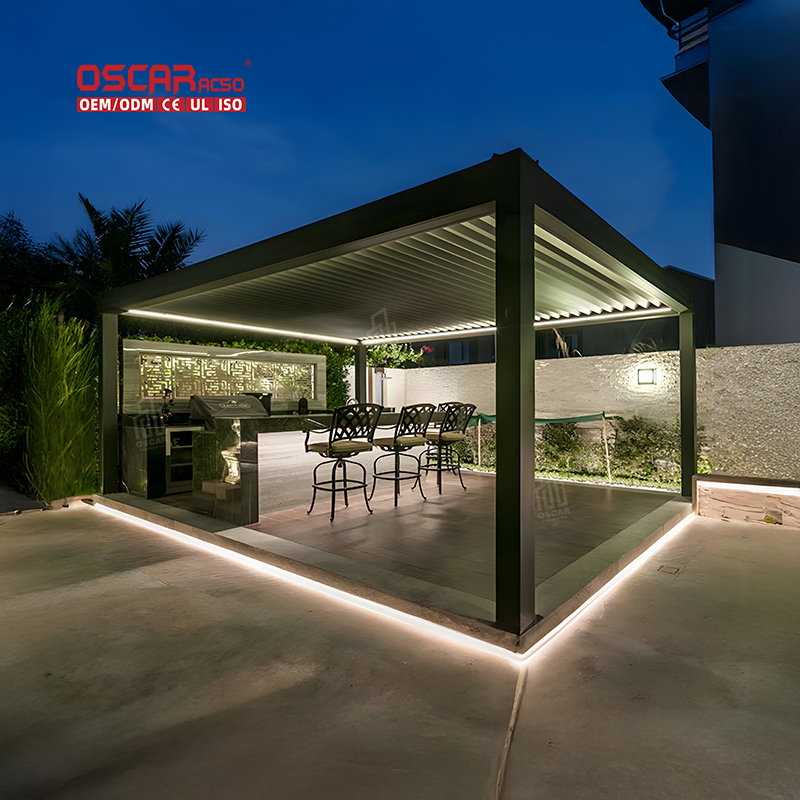Pergola Origins, Tracing the Archways Through Time
The pergola, an iconic garden structure, boasts a history as rich and intertwined as the climbing plants that often ador...
The pergola, an iconic garden structure, boasts a history as rich and intertwined as the climbing plants that often adorn it. While many might picture a modern backyard feature, its origins are ancient and deeply rooted in the practicalities and aesthetics of early civilizations.
.jpg)
🌿 The Name’s Roots: From Vine to Architecture
The term “pergola” itself is Italian, deriving from the Latin word pergula, which translates to a “projecting eave” or, more evocatively, a structure supporting vines. This linguistic clue points directly to its primary early function: providing a shaded walkway for vineyards and gardens. The name suggests a structure designed to be intertwined with nature, specifically supporting climbing plants like grapevines.

Some theories also connect the name to geographical features. For instance, the Italian town of Pergola, a beautiful village in the Marche region, suggests a connection to a “gola” (gorge) or a “pergolato” (a bower or arbor adorning the entrance of an ancient church). This hints at how the structure’s name might be intertwined with places known for their natural beauty and architectural integration.
🏛 Ancient Foundations: Beyond the Roman Villa
It’s a common belief that pergolas were staples in lavish Roman villas. While the Romans certainly perfected and widely used them, evidence suggests the concept might be even older. The Romans, master engineers and architects, employed pergolas to create shaded walkways (ambulationes) in their gardens. These structures provided respite from the sun and were essential for enjoying outdoor spaces in comfort.
However, the fundamental idea of creating a shaded passageway using plants and simple supports likely predates Roman civilization. Earlier cultures in the Mediterranean and Mesopotamia, who also valued garden design and sought relief from the heat, probably developed similar, if less formal, structures. The Roman innovation lay in engineering these features with greater permanence and sophistication using stone, brick, and elaborate woodwork.
⛪ The Medieval Shift: From Utility to Spirituality
With the decline of the Roman Empire, the focus of pergola-like structures shifted. Grand private gardens became less common, but the knowledge of building such shaded walkways was preserved in monastic gardens. Within monastery walls, functional pergolas served practical purposes, supporting plants for food, medicine, and creating quiet paths for contemplation. This period ensured the architectural concept survived through centuries of European history.

🌸 Renaissance Revival: A Symbol of Art and Order
The pergola truly came back into its own during the Italian Renaissance. This era saw a renewed interest in classical ideals, art, and architecture. Gardens were no longer just utilitarian; they became extensions of the home, expressions of wealth, power, and artistic taste. Pergolas became central features in the grand gardens of villas and palaces, designed to impress and provide leisurely strolls adorned with sculptures, fountains, and, of course, climbing roses and vines.
🏡 The Modern Pergola: Global Adaptation
The pergola’s journey from the Old World to the New World coincided with European expansion. As settlers moved across the globe, they brought their architectural traditions with them. The pergola found a new home in diverse climates, from North America to Australia.
In the 19th and early 20th centuries, the pergola experienced a significant boom in popularity. It became a staple of Arts and Crafts movement gardens, which emphasized craftsmanship, natural materials, and the harmony between buildings and their landscape. This era solidified its place in residential garden design.
.jpg)
Today, the pergola is more popular than ever. It has evolved beyond its classical roots, adapting to various styles:
- •
Materials: Modern pergolas might use traditional wood, durable vinyl, sleek aluminum, or even composite materials.
- •
Design: Styles range from classic and rustic to minimalist and contemporary.
- •
Function: Many are now outfitted with retractable shade canopies, integrated lighting, and even heating, making them true outdoor rooms.
The core appeal remains unchanged: creating a defined, comfortable outdoor space that blends seamlessly with nature.
💡 Why Did the Pergola Become So Enduringly Popular?
The pergola’s timeless appeal lies in its unique combination of form and function. It provides just the right amount of filtered shade, defines an outdoor space without fully enclosing it, and offers a framework for beautiful plants to thrive. It’s a structure that invites one to slow down, relax, and enjoy the beauty of a garden.
✨ Beyond the Backyard: The Pergola’s Artistic Legacy
The pergola’s influence extends far beyond practical garden design; it has cemented itself as a cultural and artistic icon. For centuries, it has been featured prominently in paintings, literature, and music, often symbolizing a romantic, idealized connection to nature and leisure. From the canvases of Impressionist painters capturing dappled light under vine-covered arches to its role as a serene setting in novels, the pergola represents an aspirational outdoor living space. This artistic patronage has profoundly shaped our perception of the pergola, elevating it from a simple garden tool to a powerful symbol of tranquility and beauty.
The pergola’s story is one of adaptation and enduring appeal. From ancient vineyards to modern decks, it has consistently provided a graceful way to blend architecture with the natural world, offering a shaded haven for millennia.


